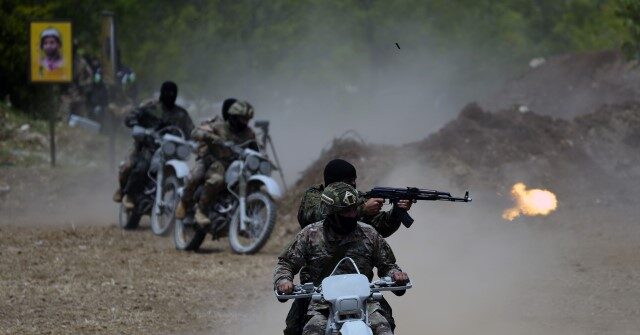Hezbollah, the Iran-backed Lebanese militant group, recently declared its intent to enter a new and heightened phase of confrontation with Israel, despite suffering significant losses among its leadership. The announcement, made on a Friday, asserts that this decision is based on directives from the “Resistance Command.” The group aims to demonstrate its capability and resolve in combat, signaling to both its supporters and adversaries that it remains a potent force despite recent setbacks. This shift in strategy is framed as a response to ongoing Israeli operations that have substantially depleted Hezbollah’s command structure.
In its statement, Hezbollah claimed responsibility for multiple attacks on Israeli forces, alleging the deaths of ten Israeli soldiers and injuries to around 150 others within a short period. The group has also claimed to have destroyed several of Israel’s advanced military assets, including nine Merkava tanks and four militarized bulldozers. These assaults purportedly utilized new weaponry, including drones and precision-guided missiles—indicating an enhancement in Hezbollah’s operational capabilities. Moreover, Hezbollah asserted defensive successes, stating that it had downed two Israeli reconnaissance drones, reinforcing its narrative of ongoing resistance.
Despite these declarations, there are indications that Hezbollah’s rhetoric may be designed primarily for psychological and propaganda purposes, intended to maintain an appearance of cohesion and operational effectiveness. Reports have surfaced regarding the rapid establishment of a new “operations room” capable of commanding troops just days after a devastating Israeli airstrike eliminated its previous command center, including the group’s leader, Hassan Nasrallah. The airstrike on September 27 had catastrophic effects, significantly weakening the organization’s leadership and prompting a restructuring of its operational command.
The emergence of this new “operations room” is accompanied by claims that Hezbollah’s fighters are closely monitoring Israeli movements and are prepared for surprise attacks. Sources within the organization have suggested that they maintain stockpiles of precision-guided missiles yet to be deployed in combat. Additionally, they assert the existence of undetected terror tunnels, potentially providing a strategic advantage against Israel’s ground operations. Such statements aim to project resilience and combat readiness following significant leadership losses, while simultaneously seeking to reassure supporters of Hezbollah’s ongoing relevance.
Hezbollah’s offensive actions recently included a successful drone strike on an Israeli Defense Forces (IDF) base near Haifa, which resulted in casualties among Israeli soldiers. This operation, which resulted in the death of four trainee soldiers and injuries to several others, illustrates the group’s commitment to retaliatory actions despite its weakened state. However, these operations also coincide with developments on the broader battlefield, as the Israeli military has targeted senior Hamas officials, including the killing of Hamas leader Yahya Sinwar. Such events may diminish the morale of allied militant groups, including Hezbollah, as they grapple with losses and reassess their strategic positions.
In conclusion, while Hezbollah’s declarations of a new phase in its confrontation with Israel signal an attempt to rally its forces and maintain strategic momentum, the group faces considerable challenges stemming from recent losses and Israeli counteractions. With its leadership significantly impaired, the organization’s capacity to implement its threats remains uncertain. Nonetheless, Hezbollah’s commitment to utilizing its remaining resources, including advanced weaponry and long-established combat infrastructure, highlights its ongoing intention to confront Israeli forces, albeit under increasingly precarious circumstances. The situation in the region remains dynamic, with impacts from both Hezbollah’s actions and Israeli responses likely to shape the landscape of conflict in the near future.

